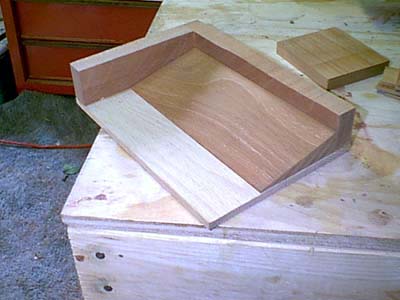I have been playing around with handcut dovetails lately.
I wanted to learn an easy way to make them without the expense
of the router jigs on the market.
This is a jig I came up with while working towards this goal.
This jig is only used to cut the pins, but because it cuts them
equally from each side, it makes them symetrical.
The key is in the wedge that sits in the sled.
This wedge is not attached, it just lays against the side.
This way it can be flipped to cut an equal, but opposite angle.
Dont ask what angle I used to cut the wedge.
I just tilted the bandsaw till the blade was lined up from
corner to corner on the wood and just started cutting.
Afterwards, I ran the wedge through the jointer to get a
smooth surface.
I am sure you can set an angle if you wanted a particular
angle to your dovetails.
I didnt think it was that important.
|

|
|



